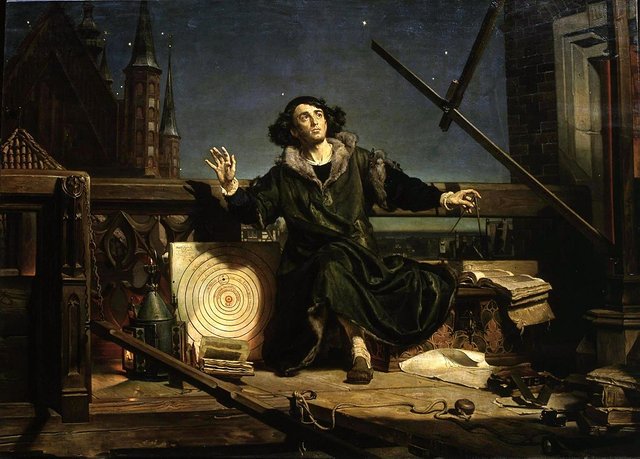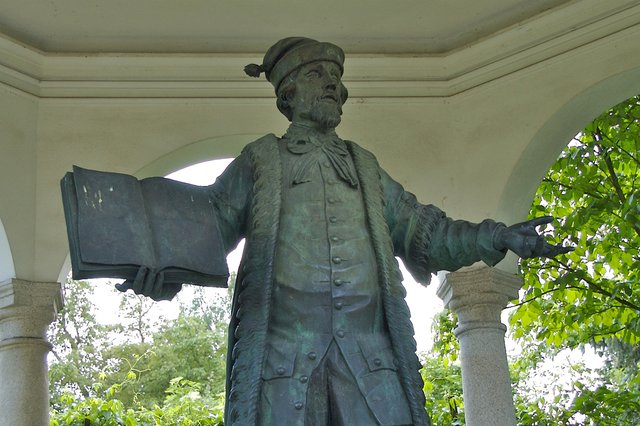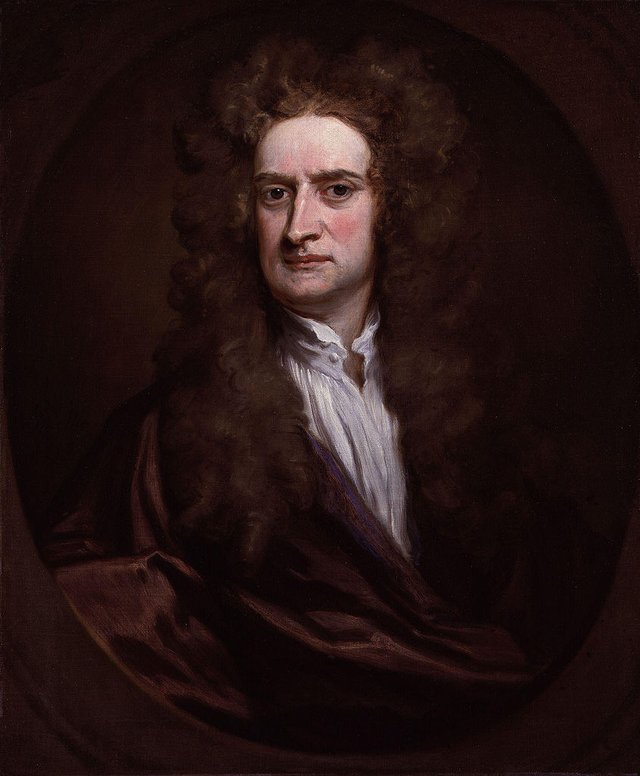Copernican Astronomy
When Ptolemy died in the second half of the second century, the fate of astronomy fell into a deep sleep for over a thousand years. At that time, Islam astronomers didn't make any revolution. The breakthrough came at the beginning of the sixteenth century, when one man proposed a theory that changed all previous views on the theme of the cosmos.

By Andreas Cellarius link [Public domain]
In the 7th century, the Islamic empire was founded. Ptolemy's work was translated into Arabic, and the scholars there, following his works, carried out the research of the cosmos themselves. Arabs didn't make a revolution in astronomy, but for a long time overtook scientists from Christian countries. In Europe at that time, the Church officially adopted the model of the geocentric construction of the universe and exercised power not only over religion, but also over other sciences.

By Jan Matejko link [Public domain]
The revolution was made by Nicolaus Copernicus, who lived in the years 1473 to 1543. At the Cracow Academy he went to the local astronomy school, then he went to Italy to study law and medicine. Copernicus from the beginning was not a proponent of the geocentric theory, he had many doubts about it. Although the Polish astronomer retained many solutions from Ptolemy's theory, such as circular orbits and epicycles, he made the most important change: he placed the Sun in the center of the universe, and Earth became one of the planets orbiting him. In this way Heliocentric (Sun in the Center) was created a model of the universe construction, which Copernicus described in the work: De Revolutionibus Orbium Coelestium (On the Revolutions of the Heavenly Spheres) in 1543.

By Museum of Fine Arts link [Public domain]
The Copernicus theory began to gain popularity. However, Tycho Brahe, a Danish astronomer who lived in the years 1546 to 1601, appeared on the way of its development. He didn't trust Copernicus and decided to perform many astronomical observations of high accuracy to rebuild astronomy from scratch. On the island of Hven off the coast of Denmark, he built a castle, which became an astronomical observatory, which the world didn't see then. From 1576 to 1597, Tycho carried out a huge amount of research and observation. Brahe created his own model of the universe, in which he combined the theory of Ptolemy with the theory of Copernicus. In his model of the cosmos, the planets orbited the sun that circled around the immobile Earth. Astronomy has taken a step back.

By Aldaron, a.k.a. Aldaron link [CC BY 3.0 licence]
Brahe moved to Prague, where he brought the Austrian mathematician and astronomer Johannes Kepler. Living in 1571 to 1630, Kepler was a supporter of Copernicus. He had a mathematical imagination and believed that only mathematically can discover the secret of the construction of the universe. Using the results of Brahe's research, he tried to create his own model of the cosmos. However, he failed and came to the conclusion that Tycho's theory is incorrect. Kepler decided to replace the circles with ellipses, which improved the results of his research. The ellipticality of orbits is the first of the three laws of the motion of the planets he discovered. He also claimed that the line connecting the planet and the Sun sets out equal fields at the same intervals. His third discovery put him in awe: the period of solar circulation of a given planet in the years raised to the square equals the cube of its mean distance from the Sun in the units of Earth-Sun.

By Justus Sustermans link [Public domain]
Another proponent of Copernicus was Galileo, who lived in 1564 to 1642. In 1609, he became the first person to use the telescope for researching the sky. His discoveries turned out to be amazing. He revealed craters and mountains on the moon, the four largest moons of Jupiter, sunspots, phases of Venus, and many other mysteries of heaven. In 1610, Galileo publishes the Star trailer, in which he describes his observations of the sky using his own telescope. Astronomers from around the world are shocked. Galileo's discovery matched Copernicus' theory. The church, outraged by these discoveries, could not reconcile with them, and in 1633 in Rome, the astronomer was found guilty of supporting Copernicus' teachings and forced to deny his views. However, he didn't do this and therefore he spent his last years under house arrest.

By Godfrey Kneller link [Public domain]
At the time that Galileo died, Isaac Newton was born in England (1642-1727). It was thanks to him that the principles of Copernicus and Kepler were finally confirmed. Newton developed their views on new mathematical methods that allowed him to analyze the movements of celestial bodies and thus discover the law of universal gravitation. He showed that Kepler's laws are the result of gravity. He also created the first reflecting telescope, which was technically ahead of Galileo's telescope. In 1687, he publishes his work, which will form the basis of physical sciences until the beginning of the 20th century. Only Albert Einstein will show the limitations and shortcomings of Newton's theory of the universe.
Greetings to lovers of Astronomy!
References:

Highly cool, friend.
I will be featuring it in my weekly #technology and #science curation post for the @minnowsupport project. You will also have the chance to win STEEM right from my own wallet!
Wish not to be featured in the curation post this Friday? Please let me know. In the meantime, keep up the hard work!
If you have a free witness vote and like what I am doing for the Steem blockchain it would be an honor to have your vote for my witness server. Either click this SteemConnect link or head over to steemit.com/~witnesses and enter my username it the box at the bottom.
I wish you all the best here on the Steem blockchain.
Thanks! Sure, I agree.
This post has been voted on by the SteemSTEM curation team and voting trail in collaboration with @curie.
If you appreciate the work we are doing then consider voting both projects for witness by selecting stem.witness and curie!
For additional information please join us on the SteemSTEM discord and to get to know the rest of the community!